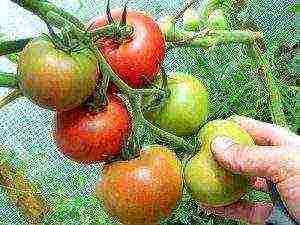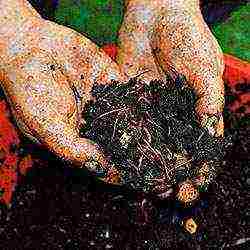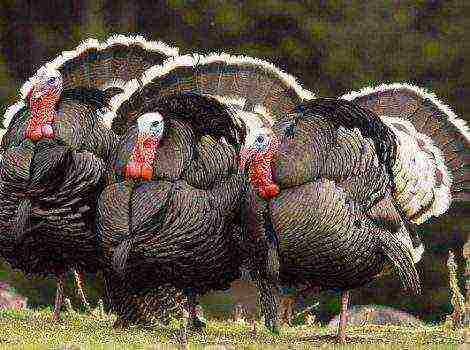Content
By carefully preparing a pond for breeding silver carp, as well as by planting feed in the nearby area, the owner will be able to make regular profits and use the products personally. Such a business will be promising and profitable if the optimal conditions for keeping fish are adhered to.
The content of the article:
- Valuable food product
- Why is silver carp recommended by nutritionists?
- Breeding silver carp at home
- Primary requirements
- Success in fish farming: reality or dream?
Silver carps (otherwise: silver carps) are a genus of fish belonging to the cyprinid family. The genus includes three modern species: silver carp, silver carp, hybrid silver carp and one extinct fish species. In Russian reservoirs, only two species are found: white and variegated.
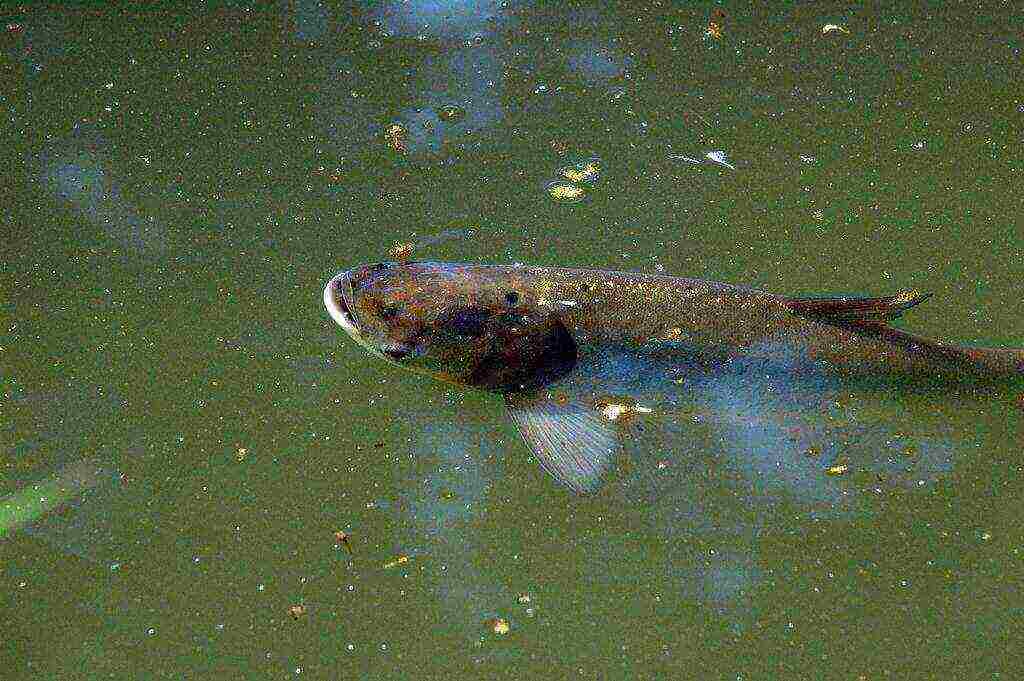
These fish are essentially filter feeders - they purify water from detritus due to a specific adaptation to filtration - gill stamens connected by bridges. Therefore, in order to have clean, transparent and fresh water in the reservoir, it is not only filtered with special devices, but also silver carps are launched into the reservoir. Since water temperatures of 18-20 degrees Celsius are considered a comfortable temperature for their spawning, silver carps reproduce well in the climatic conditions of the Russian Federation, while they are unable to live in European water bodies. China is considered the homeland of these fish, but later they were artificially launched into many Russian and Ukrainian rivers.
Silver carps live in large flocks. The average life span of these fish is 5-7 years. In size they reach up to 1 meter in length. Their weight is up to 35 kilograms. Their scales have a shiny silver tint, and their head seems disproportionately large. This fish is of great value in the food industry and is actively cultivated in artificial conditions. It is growing rapidly. At the age of three, it can weigh up to 5 kilograms, and an adult is quite capable of reaching a weight of 16 kilograms, which is extremely beneficial for manufacturers of consumer products from silver carp meat.
Valuable food product
The energy value of 100 grams of raw silver carp is 86 Kcal. Depending on the cooking method, age and size of the fish, this figure varies. For example, when stewing, the calorie content drops by 10 kcal, and when frying, it rises by 15.
Fish meat from the age of 5 years is considered more fatty, and therefore has a higher energy value. At the same time, silver carp meat is rich in proteins and carbohydrates useful for digestion, which are easily absorbed by the body. In addition, it is rich in both omega-3 and omega-6 acids, vitamins of groups B, E and D, provitamin A, contains a large amount of phosphorus, iron, sodium, potassium, calcium, zinc and sulfur.
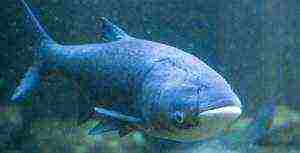
Omega-3 and omega-6 acids, when consumed regularly, prevent the formation of malignant tumors, nervous disorders, the development of cardiovascular failure, hypertension, and lower cholesterol levels to normal levels. A huge amount of minerals helps to improve the growth of nails, hair, nails, promotes reparative regeneration, in particular of the skin, stimulates the production of iron-containing hemoglobin, which performs a gas exchange function, and removes toxic substances.
Patients with hypertension, diabetes, gout are advised to eat silver carp meat.A diet high in silver carp meat has a positive effect on the body.
For diseases such as diabetes mellitus, hypertension, gout, gastritis, or with low acidity, it is also recommended to eat silver carp in boiled, steamed, stewed form. A decrease in sugar, cholesterol and blood pressure is noted within a few weeks.
Why is silver carp recommended by nutritionists?
- almost 98% of the proteins of this fish are assimilated by the human body;
- the time for complete assimilation of silver carp meat is on average about two hours;
- fish oil contains vitamins of groups A and D;
- meat is low in calories;
- recommended for use by people with overweight and nervous diseases;
- cardiovascular and digestive systems;
- during thermal processing, the meat loses less liquid, so the dishes are easy to chew and digest quickly.
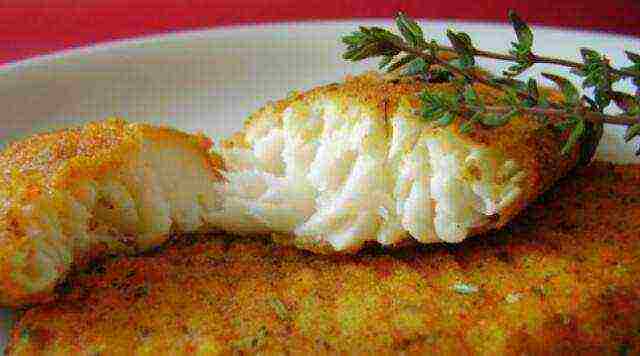
This fish is also used in cosmetology. Due to the content of high-molecular collagen in meat, creams and gels are produced from it, moisturizing and nourishing the skin, smoothing the unevenness of its surface. Hair and nail masks based on the same high-molecular-weight collagen help to strengthen and heal them.
Breeding silver carp at home
Growing silver carp requires special conditions. So, the water should be warm - up to 25 degrees Celsius, these fish are very fond of the sun, the muddy bottom of the reservoir and reservoirs rich in vegetation. The ideal depth for them is 3-4 meters. At dawn and dusk, the silver carp swims into shallow water, and in the afternoon it swims to the bottom.
Silver carps feed mainly on phytoplankton, zooplankton, which is a source of proteins. The three different silver carp species differ ecologically and morphologically. They also differ in nutritional preferences. Silver carps are medium-sized schooling fish that feed only on phytoplankton.
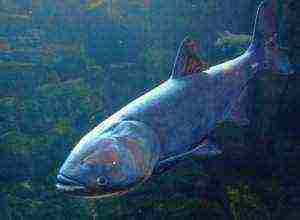
Silver carps are large fish, the head of which makes up half of their mass. The color of their scales is dark, sometimes spotty. Their diet is extensive, including zooplankton, so they quickly gain weight. Hybrid silver carp are large fish, the head of which is only 20% of the mass, rapidly gaining weight, feeding on both zooplankton and phytoplankton. Cold resistant.
Silver carps can also eat artificial feed. They grow to marketable mass at the age of two, as they weigh about 500-600 grams.
Sexual maturity in these fish occurs at the age of 3-5 years, when their body length reaches 50 centimeters. Spawning is carried out at a water temperature of about 18-20 degrees Celsius, that is, in May - June. Silver carp eggs are floating, swept out only in places with whirlpools or downstream. The caviar swells in water. Fertility is high - from one million to three million eggs per spawning.
Silver carp breeding can take place, for example, in a pond. The life of a silver carp in an artificial reservoir should last 2-3 years. It is necessary to take into account the requirements of the fish for the size and depth of the pond, oxygenation, observe the size and development of the fish. So, dividing them by age groups, allows you to avoid the spread of diseases, improve the conditions for breeding and growing fish.
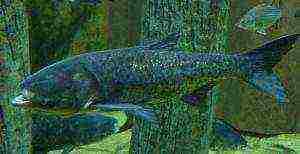
The optimal pond is considered to be from two hundred to three hundred square meters in size. The pond should be filled with different types of plants to facilitate the attachment of eggs. Spawning grounds are used in May-June for no longer than two weeks.
The first fish transfer takes place after 5-7 weeks. The presence of up to 900 fish per hectare of the reservoir is allowed, if, of course, the growth does not exceed 2 kg. The bottom of the pond must meet the requirements of the fish. At first, the planted fish eat only natural food, which must be introduced there in large quantities. In the fall, sexually mature individuals are chosen, which will subsequently give birth to offspring.They are placed in a separate reservoir, where they are kept until spawning.
As a business, growing silver carp is a simple, but labor-intensive economy.
Primary requirements
- When the water temperature is below 18 degrees Celsius, the fish does not receive enough nutrients from the feed, so all the energy it receives, all the nutrients are spent on maintaining the vital functions of the fish, and practically nothing is stored. Thus, the fish does not gain the proper mass.
- Water bodies should be regularly cleaned and disinfected, otherwise waterlogging, the occurrence of infections in fish.
- Agricultural products are subject to a certain agricultural tax. Then the volume of sales should represent exactly agricultural products in 70%, if this is not the case. The main income of the company comes from processing or retail sale - this is taxed according to different rules, it can even lead to fines if it is stated that the company is agricultural.

The first thing it is recommended to do is to thoroughly study the area of the site for the fishery, the depth of the reservoir, the possibility of supplying and discharging water. It is recommended to grow silver carp or hybrid silver carp for profitability, as they are considered fast growing and are edible at 80% of their body weight. Thus, in the reservoir, the increase can be up to 6 centners per hectare. Knowing the cost of fish and feed, it is possible to determine the profit. On 10 hectares of the reservoir, you can place 5 tons of fish. The cost of 1 kg of fish is on average 90 rubles, then the income from the sale of this volume will be about 500 thousand rubles. Costs in the form of prices for feed, catch, water protection, transportation and marketing costs are deducted from this income, then we have a net profit. On average, 1 kilogram of fish grows per 3 kilograms of feed. Therefore, the costs can exceed the costs, unless you grow the feed yourself on the site near the pond.
If the site does not allow this, it is possible to breed geese, but the pond must recycle the contamination from them. Geese fertilize the reservoir and clean it, create additional food for fish, in addition, fish parasites and carriers of their diseases are exterminated. Geese lay eggs, which can be sold, thereby making agriculture particularly profitable - it combines two areas: fish and geese breeding.
It is recommended to organize recreational fishing in the pond as an additional income, charging a certain fee for this. This will contribute to both the popularization of the enterprise and the increase in earnings. After all, silver carps are deep-sea and heavy fish: they do not bite the bait, it is very problematic to catch them. Thus, it is possible to have additional profit from this, while at the same time with almost no expenses.

Success in fish farming: reality or dream?
One of the most successful enterprises in Russia, which specializes in the cultivation of silver carp, is Biserovo. Its general director Andrey Semenov claims that the farm annually sells up to two tons of live fish. This volume is partially grown on the basis of the enterprise itself, the rest of the volume is grown in ponds rented throughout the country. At the moment, the company supplies live fish to all large chain stores throughout Russia. Andrey Semenov argues that the most difficult thing in the fish business is implementation. After all, fish is a seasonal product. Fish have the highest price in summer, and the lowest price in early autumn, because then each fish farm presents its product on the market.
In order for the fishery to be in principle competitive, one third of the employed workers must be involved in the marketing of products. Biserovo has a well-functioning delivery system: every day, orders are distributed to 14 vehicles, which pass a clearly defined route between customers.Of course, in order to establish this system, it was necessary to think over plans, conclude contracts, and participate in various promotions. But, according to Andrey Semenov, all this brings excellent income.
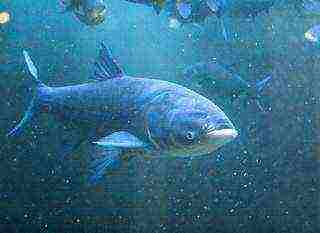 Few fishermen can boast of catching silver carp in the wild. Most often, large catches can be expected on private reservoirs, where silver carp breeds in huge quantities and practically no one leaves without a catch. Breeding silver carp as a business idea is very good.
Few fishermen can boast of catching silver carp in the wild. Most often, large catches can be expected on private reservoirs, where silver carp breeds in huge quantities and practically no one leaves without a catch. Breeding silver carp as a business idea is very good.
This fish is found in the waters of the Amur, and in other regions it is bred exclusively in private reservoirs. The fish is quite unpretentious. Gains mass very quickly. Some individuals reach 1 meter in length and up to 3 tens of kilograms in weight. The fish has no enemies, it exists quite peacefully with its fellow carp and grass carp. Silver carps have 3 types.
White (common) silver carp
Has a gray-green scale on the back and silvery sides. The silver carp has an elongated body and a head that occupies a fifth of the entire body.
Silver carp
The main feature of this species is the head, which occupies half of the entire body. The silver carp has dark sides and a dark green back. The main advantage of the silver carp is its very fast weight gain.
Hybrid silver carp
This species is considered ideal as it has a relatively small head and a fast rate of mass gain. Its distinctive feature is that it can be kept in cool water.
 All silver carps love to spend time in warm water. They manifest themselves most actively at a temperature of + 25 degrees, then they have an excellent appetite and, accordingly, they are gaining body weight. Ideal for their maintenance, the reservoir should not exceed 4 meters in depth. Silver carps like to spend the morning and evening hours near the coast, and when the sun is at its zenith, they try to hide in the depths or bury themselves in the silt.
All silver carps love to spend time in warm water. They manifest themselves most actively at a temperature of + 25 degrees, then they have an excellent appetite and, accordingly, they are gaining body weight. Ideal for their maintenance, the reservoir should not exceed 4 meters in depth. Silver carps like to spend the morning and evening hours near the coast, and when the sun is at its zenith, they try to hide in the depths or bury themselves in the silt.
Silver carp reaches sexual maturity after 3 years of age. Spawning occurs in early summer when the water is sufficiently warm. One silver carp female is capable of spawning up to a million eggs, which remain floating in the water. The fish tries to spawn in whirlpools. Newborn eggs swell from water and increase in size up to five times, then begin to drift. After 3-4 days, silver carp larvae hatch from the bubbles and immediately begin to gain body weight, eating everything around.
Silver carp meat is very valuable. It is quite fat, but at the same time retains its tenderness. Silver carp meat is successfully used in dietary nutrition.
We also want to remind you that very often we write business ideas about fish farming, in particular, we recommend reading at least a few articles: “Alternatives in small business - carp farming”, “Smoking fish at home” and “Business plan for crayfish breeding”.
Breeding White Cupid and Silver Carp
The herbivorous fish, which are now becoming more and more widespread in the water bodies of Russia, include grass carp, common and variegated silver carp.
Quite numerous experiments on breeding and growing the White Cupid and Silver Carp in ponds have shown that in central Russia, underyearlings of the grass carp reach an average of 15-20 g, two-year-olds 200-300 g, three-year-olds - 1 kg.
In the Krasnodar Territory, three year old grass carp grows on average up to 2 kg, and in the Turkmen SSR - up to 3 kg or more.
Underyearlings of the common silver carp grow in ponds in central Russia up to 7-10 g, two-year-olds up to 400 g and three-year-olds up to 800 g.
Two and three-year-olds, silver carp reach 500-600 and 1000-1200 g, respectively.
All these fish, especially the silver carp, are very sensitive to any damage.
Therefore, they should be transplanted from one reservoir to another as rarely and carefully as possible.
Cultivation of breeding material begins with the larva.First, juveniles are reared up to the age of about 3 weeks (from the moment of hatching from eggs) in special juvenile ponds, in which the abundant development of zooplankton is ensured. The grown fry are transplanted into nursery ponds, where they are grown until autumn.
Grown underyearlings are left to winter in nursery ponds (if conditions permit) or are transplanted into wintering ponds in the fall.
Pedigree two-year-olds and older fish are reared in separate small ponds such as feeding ponds or in nursery carp ponds together with carp fingerlings.
This is done because when the herbivorous fish are separated from the carp underyearlings during the autumn harvest, they are less injured than when the two-year-old carp are separated from the commercial (table) carp when fishing feeding ponds.
Two-year-old herbivorous fish selected for the tribe and older young replacements are planted for wintering in separate wintering ponds, in which there is soft underwater vegetation.
Approximate norms for planting replacement young stock of herbivorous fish in ponds when growing breeding material are as follows: grass carp 50-80 pcs / ha with a piece annual growth of not less than 1.0-1.3 kg; common silver carp 600-800 pcs / ha in the southern regions and 200-400 pcs / ha in the middle lane with a piece increment over the summer of not less than 1.0 kg; silver carp up to 300 pcs / ha in the south and up to 200 pcs / ha in the middle lane with an average annual growth of about 2.0 kg.
In the fall, a group of fish is selected from the old-age repair herd, from which they expect to get offspring next spring. These fish (future producers) are planted in a separate wintering pond, in which they are kept until spawning. Producers from different species of herbivorous fish are planted, if possible, in separate wintering areas.
Flowing in such wintering ponds is not necessary. It is only needed if the dissolved oxygen content drops below 3 cm / l.
In the spring, when the water temperature in the wintering ponds rises to 10 ° C and the fish begins to feed quite intensively, the ponds are fertilized (by water) with ammonium nitrate or ammonium sulfate and superphosphate. This is done to ensure better development of lower algae and crustaceans.
White grass carp is fed with freshly cut grass or finely ground compound feed, oilcakes, meal, grain waste, which are set in the form of a thick dough. The daily feed supply is 2-4% of the live weight of the fish.
SPREADING OF WHITE AMUR AND BOLTOLOBIK
At the onset of a stable water temperature of about 20 ° C (a few days after the carp broodstock spawn), wintering ponds are fished and the broodstock are carefully examined, separating males from females.
Breeders of herbivorous fish do not spawn in ponds, even those with strong flowing ones, although their reproductive products develop quite normally up to the fourth stage.
Therefore, to obtain offspring, they use the pituitary injection method. For herbivorous fish, so-called fractional injections are used: first, a preliminary (introductory) injection is made, and a day later, a permissive injection. Acetonated carp pituitary glands are used for injections.
FM Sukhoverkhov, based on his research and data from Chinese fish farmers, suggests replacing the pituitary glands of the carp with the pituitary glands of the goldfish, the procurement of which is much easier.
After the pre-injection, the fish are released into the flow ditches, males separately from females. A day later, they are caught again, given a permissive injection and planted in low-flow cages. In 10-14 hours after the permissive injection, mature eggs are strained into an enamel basin, inseminated with milk strained here (stirring with a goose feather).
The fertilized eggs are washed for about 5 minutes, and then transferred to incubation apparatus. It should be borne in mind that the eggs of herbivorous fish after fertilization greatly swell and increase in size.So, if the diameter of non-swollen eggs is 1.1-1.3 mm, then after swelling it increases to 4-5 mm. This contributes to a significant reduction in the specific gravity of the eggs and ensures their buoyancy in water streams.
The eggs of herbivorous fish are incubated in the Ses-Green apparatuses installed on the current, the Weiss apparatuses, less often in the Chinese-style floating apparatuses.
The incubation of fertilized eggs at a temperature of 22-26 ° C lasts 28-34 hours. The hatched free embryos are 5-5.5 mm long.
They are inactive and, being in devices, periodically rise to the surface of the water. After 3-4 days, they switch to a mixed diet (yolk + processed food).
At the age of 5-7 days, the yolk sac of the larvae is completely absorbed, and at this time they feed on lower algae, rotifers, small crustaceans (mainly cladocerans).
Up to 6-8 days of age, the larvae are kept in juvenile pools, into which water saturated with small live food is supplied, and then they are transplanted into nursery ponds.
At the age of 40-45 days, the juvenile stage of development ends, and they switch to food typical for adult fish.
If you are still looking for a niche for business, read our section "Business Ideas 2014", and in the category "Business plans" there are ready-made financial calculations.
Rate the article:
(0 votes, average: 0 out of 5)
The silver carp, feeding on exclusively finely dispersed food in the form of microalgae and small zooplankton, is able to process significant amounts of food, thereby becoming a kind of meliorator - a purifier of water bodies from excessive amounts of algae.
General characteristics and nutrition of silver carp
White silverhead (or common) - flattened from the sides, covered with small scales. Two and three-year-old silver carps are silvery, older fish are bluish-gray. The eyes are deeply set. The upper back has a dark stripe on both sides, the sides are light. The silver carp's mouth is directed upward. The silver carp has a keel that runs from the line of the gill opening to the anal fin. In the Yanztsy River (give birth to a white thick-forehead) fish at the age of 11-15 years reaches a mass of 20 kilograms. The intestines of the bighead fish are six times longer than the body.
In China, in the Yangtze River, silver carp (white) reaches sexual maturity in three to four years, in Hungary 5-6 years. Silver carp spawns at temperatures close to 24 degrees.

Figure white silver carp
The first food for silver carp fry is zooplankton. When the length of its body reaches five to ten centimeters, the silver carp switches to feeding on phytoplankton. By this time, the fish on the gill arches develops a filter apparatus, and the silver carp filters out phytoplankton. A white silverhead weighing a quarter of a kilogram can filter up to 32 liters of water per hour, while filtering out up to 1300 mg of small algae. Since the food components used are small, the digestion of food in silver carp is fast - for intensive use of food, the intestine is greatly lengthened. The two-year-old silver carp uses mainly algae, which currently prevail in the reservoir. During intensive feeding, the fish is in the place of the pond where a mass of algae accumulates under the influence of the wind. With a sufficient amount of heat for the second summer, it reaches a commercial load without much stress.
Silver carp grows slower than grass carp. After the 1st summer, it reaches a mass of 25-60 grams (optimal), after the 2nd summer - 300-600 grams, and after the 3rd - 1.0 - 1.6 kilograms. The mass of four-year-old silver carp can be 2.0 - 3.0 kilograms.
The activity of silver carp fish is especially beneficial during the period of "flowering" of water bodies, when algae die off and, settling on the bottom, decompose, creating an oxygen deficiency.
Stocking and fishing
Depending on the temperature conditions in the fish breeding zones of the country, the stocking density changes dramatically.So, if in the northern zone of the country it is recommended to plant up to 600 yearlings per 1 hectare of a feeding pond (and it grows here up to 250-350 grams), then in the southern regions of the country there are experiments where up to 4 thousand pieces / ha are grown and more, and with obtaining a sample of at least 500 grams. In some southern zones, silver carp is becoming the main crop of pond farms in terms of production, and carp is reared as an additional fish.
The silver carp feeds only on phytoplankton, and therefore must be planted in ponds rich in phytoplankton. When grown together with grass carp, feeding, as well as applying fertilizers to the pond, have a positive effect on the growth of silver carp.
The stocking density of silver carp can be increased:
| Amount | Weight, gram |
| 1000-1200 | 20-100 |
| 800-1000 | 100-400 |
| 600-800 | 400-600 |
The gill petals of silver carp can become clogged with silt, so it is caught before grass carp and carp. The presence of fish-collecting ditches in the fish farm outside the border of the pond with clean water greatly facilitates the catch of silver carp.
Silver carp is jumping (more than grass carp). Fishing and transportation of silver carp is carried out at low temperatures of 4-5 ° С - in cold water its jumping ability decreases. The wintering of the silver carp proceeds in the same way as the wintering of the grass carp.
Feeding the silver carp

Drawing motley silver carp
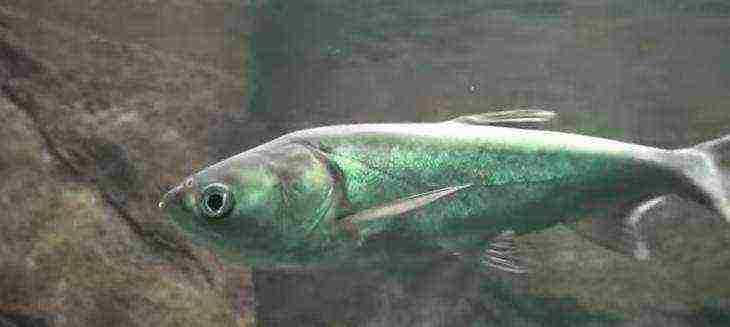
Photo of the silver carp, or southern silver carp (lat.Hypophthalmichthys nobilis)
The cultivation of silver carp under the conditions of fish polyculture allows obtaining additional products, especially in those conditions when a powerful food base for zooplankton is created and carp, due to their biological properties, are not able to use it, since in the second year of life it uses more benthos. The bighead fish, as well as the silverhead, grows well in the southern zones, in the northern zone it can reach a marketable weight of 450-500 grams by autumn, provided that the planting material is stocked with at least 50 grams. With a lack of natural forage resources, it switches to an active search for and consuming forage at forage sites, therefore, the stocking density should be treated more carefully, especially since the utilization of nutrients of feed prepared according to recipes for carp is used by the silver carp with less effect than the carp itself ...

Photo of silver carp caught on technoplankton

In the photo, spearfishing for silver carp
Stocking density of silver carp
In the northern regions, the planting density in polyculture is recommended no more than 200 pcs./ha. In the southern regions, in accordance with the developed cultivation technology, its stocking density increases, but it is limited by the peculiarities of the biology of the breeding object. Despite this, in the southern regions, fish productivity for fish - silver carp up to 6 kg / ha and more becomes real.
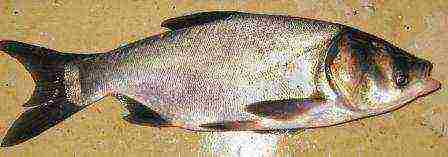
Photo of a silver carp of the year
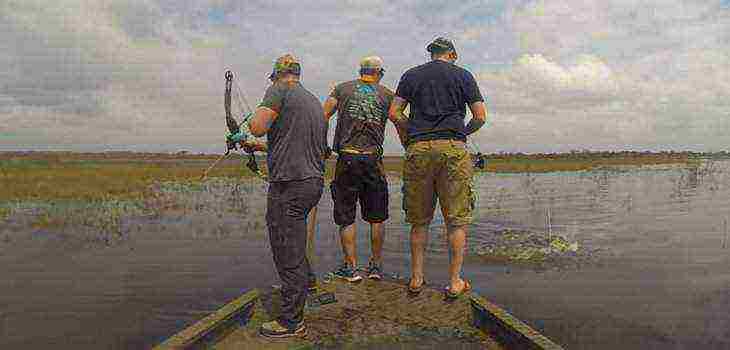
In the photo, catching a silver carp with a bow
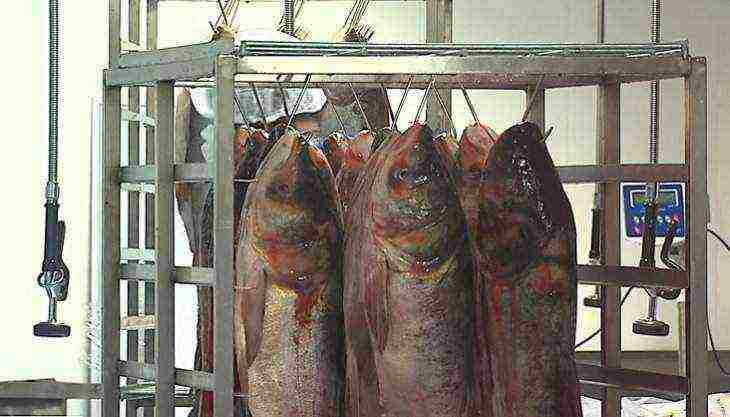
Photo preparation of silver carp for smoking
Fertility
Silver carp reaches sexual maturity by the age of six. Its fertility is from 400 to 500 thousand eggs. Silverhead spawns from the end of the nursery to the end of August at a water temperature of about 25-30 ° С, while it spawns eggs in portions - three times per summer. The eggs of silver carp females are deposited in the upper layers of the water, where it develops.
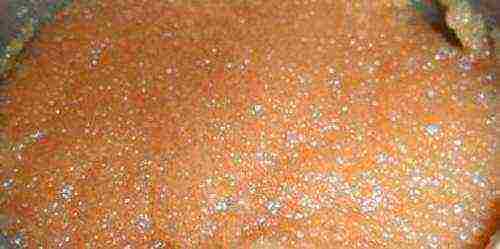
Photo silver carp caviar
In recent years, scientific work has been carried out on the implementation of hybridization in herbivorous fish. Hybrids of variegated and white silver carp are interesting for breeding. These fish differ from the parental forms: they are more resistant to low temperatures, these hybrids retain the growth rate characteristic of the silver carp.
The silver carp, feeding exclusively on finely dispersed food in the form of microalgae and small zooplankton, is able to process significant amounts of food, thereby becoming a kind of meliorator - a purifier of water bodies from excessive amounts of algae.
General characteristics and nutrition of silver carp
White silverhead (or common) - flattened from the sides, covered with small scales. Two and three-year-old silver carps are silvery, older fish are bluish-gray. The eyes are deeply set.The upper back has a dark stripe on both sides, the sides are light. The silver carp's mouth is directed upward. The silver carp has a keel that runs from the line of the gill opening to the anal fin. In the Yanztsy River (give birth to a white thick-forehead) fish at the age of 11-15 years reaches a mass of 20 kilograms. The intestines of the bighead fish are six times longer than the body.
In China, in the Yangtze River, silver carp (white) reaches sexual maturity in three to four years, in Hungary 5-6 years. Silver carp spawns at temperatures close to 24 degrees.

Figure white silver carp
The first food for silver carp fry is zooplankton. When the length of its body reaches five to ten centimeters, the silver carp switches to feeding on phytoplankton. By this time, the fish on the gill arches develops a filter apparatus, and the silver carp filters out phytoplankton. A white silverhead weighing a quarter of a kilogram can filter up to 32 liters of water per hour, while filtering out up to 1300 mg of small algae. Since the food components used are small, the digestion of food in silver carp is fast - for intensive use of food, the intestine is greatly lengthened. The two-year-old silver carp uses mainly algae, which currently prevail in the reservoir. During intensive feeding, the fish is in the place of the pond where a mass of algae accumulates under the influence of the wind. With a sufficient amount of heat for the second summer, it reaches a commercial load without much stress.
Silver carp grows slower than grass carp. After the 1st summer, it reaches a mass of 25-60 grams (optimal), after the 2nd summer - 300-600 grams, and after the 3rd - 1.0 - 1.6 kilograms. The mass of four-year-old silver carp can be 2.0 - 3.0 kilograms.
The activity of silver carp fish is especially beneficial during the period of "flowering" of water bodies, when algae die off and, settling on the bottom, decompose, creating an oxygen deficiency.
Depending on the temperature conditions in the fish breeding zones of the country, the stocking density changes dramatically. So, if in the northern zone of the country it is recommended to plant up to 600 yearlings per 1 hectare of a feeding pond (and it grows here up to 250-350 grams), then in the southern regions of the country there are experiments where up to 4 thousand pieces / ha are grown and more, and with obtaining a sample of at least 500 grams. In some southern zones, silver carp is becoming the main crop of pond farms in terms of production, and carp is raised as an additional fish.
The silver carp feeds only on phytoplankton, and therefore must be planted in ponds rich in phytoplankton. When grown together with grass carp, feeding, as well as applying fertilizers to the pond, have a positive effect on the growth of silver carp.
The stocking density of silver carp can be increased:
The gill petals of silver carp can become clogged with silt, so it is caught before grass carp and carp. The presence of fish-collecting ditches in the fish farm outside the border of the pond with clean water greatly facilitates the catch of silver carp.
Silver carp is jumping (more than grass carp). Fishing and transportation of silver carp is carried out at low temperatures of 4-5 ° C - in cold water its jumping ability decreases. The wintering of silver carp proceeds similarly to the wintering of grass carp.

Drawing motley silver carp

Photo of the silver carp, or southern silver carp (lat.Hypophthalmichthys nobilis)
The cultivation of silver carp under the conditions of fish polyculture allows obtaining additional products, especially in those conditions when a powerful food base for zooplankton is created and carp, due to their biological properties, are not able to use it, since in the second year of life it uses more benthos.The silver carp fish, like the silver carp, grows well in the southern zones, in the northern zone it can reach a marketable weight of 450-500 grams by autumn, provided that the planting material is stocked with at least 50 grams. With a lack of natural forage resources, it switches to an active search for and consuming forage at forage sites, therefore, the stocking density should be treated more carefully, especially since the utilization of nutrients of feed prepared according to recipes for carp is used by the silver carp with less effect than the carp itself ...

Photo of silver carp caught on technoplankton

In the photo, spearfishing for silver carp
In the northern regions, the planting density in polyculture is recommended no more than 200 pcs / ha. In the southern regions, in accordance with the developed cultivation technology, its stocking density increases, but it is limited by the peculiarities of the biology of the breeding object. Despite this, in the southern regions, fish productivity for fish - silver carp up to 6 kg / ha and more becomes real.

Photo of silver carp of the year

In the photo, catching a silver carp with a bow

Photo preparation of silver carp for smoking
Silver carp reaches sexual maturity by the age of six. Its fertility is from 400 to 500 thousand eggs. Silverhead spawns from the end of the nursery to the end of August at a water temperature of about 25-30 ° C, while it spawns eggs in portions - three times per summer. The eggs of silver carp females are deposited in the upper layers of the water, where it develops.

Photo silver carp caviar
In recent years, scientific work has been carried out on the implementation of hybridization in herbivorous fish. Hybrids of variegated and white silver carp are interesting for breeding. These fish differ from the parental forms: they are more resistant to low temperatures, these hybrids retain the growth rate characteristic of the silver carp.
We successfully grow silver carp in our pond farm. The article meets the realities of breeding commercial silver carp.
and where territorially?
This summer, silver carp was caught in a paid pond where it is bred. This is an interesting activity!
One and a half thousand years ago, people began to breed fish of the carp family, and since the 12th century, breeding has been mastered as a conscious type of activity. In our time, information about fish farming, which was obtained several centuries ago, is relevant.
Silver carp is a fish that lives only in fresh waters, feeding mainly on plants. It belongs to the carp family. It has incredibly tasty meat, appreciated in restaurants and home kitchens, and is grown under artificial conditions mainly for human consumption. This fish is sold from September to December, that is, the sales are seasonal. More recently, the assortment of stores has been replenished with smoked silver carp, canned food from it, as well as incredibly tasty fillets from this fish.
In English, the silver carp is called "silver carp", which means "silver carp".
Its body looks like a cone, it is flattened and wide enough, the head is sharp. This fish has no whiskers, and the mouth opens vertically. The eyes are tiny and located closer to the bottom of the head. The scales are small. A mature silver carp can grow up to a meter in length and weigh up to 10 kilograms.
He lives in Chinese and Russian lakes, as well as in rivers belonging to the Amur river system. It is found in southern and eastern Asia. Scientists have successfully bred it for many years in the east and center of Europe.
Silver carp spawns in summer, when water bodies warm up to temperatures close to 25 degrees. Caviar, the number of which is about five hundred thousand from one female fish, swims freely in the water. After hatching, it lives in calm places with a small current on the bends of rivers. The first days of life are eaten by zooplankton. Silver carp ripens in just three to four years in the Yangtze River.But in European rivers, puberty can take up to five to six years.
As soon as the body length of silver carp reaches 5-6 centimeters, phytoplankton begins to predominate in its diet. By this time, their digestive system grows rather quickly and becomes 6-7 times longer than the body.
Back in the USSR, ichthyologists have obtained hybrid species of this species of fish from crossing the silver carp with the silver carp. They are found everywhere in the water bodies of the countries of the former USSR, as well as in the water bodies of Europe.
Silver carp meat is prized for its taste. It contains up to 13% fat in young and up to 23% in mature individuals. It is highly valued for its dietary properties and the huge amount of vitamins easily absorbed by humans. It is incredibly tasty in any form: smoked, canned, fried.
It can be domesticated if grown in domestic waters. It is very resistant to temperature changes, adapting to life in hot water in summer, as well as in cold - in winter. Fish of different ages can be near due to the fact that this species does not belong to predators.
This fish is completely unpretentious to food, consumes both natural and artificial food. In winter, the need to eat tends to be minimized due to slow breathing.
Silver carp survives well the lack of oxygen, large temperature amplitudes. Withstands a long way and change of reservoirs.
Artificial growing of silver carp can be formed in about 2-3 years. It depends on which system was chosen. It is necessary to take into account the size of the reservoir, its depth, oxygen saturation, as well as the order of fishing.
In order to prevent diseases and improve the general conditions for a comfortable living, fish should always be divided by age group.
Most often, reservoirs with an area of one hundred fifty to three hundred square meters are used for breeding in ponds. It is necessary to be able to quickly release the water and quickly fill the pond with water.
The spawning ponds at the bottom are filled with a variety of grasses in order to make eggs easier to stick together. These ponds are used in late spring - early summer for only about 2 weeks.
The first time the fish are transplanted when they have lived there for 4-6 weeks. It depends on how fast the production is going. It is allowed to keep up to eight hundred silver carp per hectare of pond when, on average, it grows from a kilogram per year, and up to 300 silver carp with its growth of 2 kilograms per year.
Newly planted fish first eat exclusively natural food. It should be rye flour in the right amount.
In the fall, older fish are selected for offspring in the next season. They are transferred to another body of water. They spend the winter in it and live until spawning.
Silver carp is very fond of the sun, warm water from 25 degrees and a significant amount of plant foods. He prefers to live in ponds with a muddy bottom. During the day, the silver carp lives in the middle of the reservoir at a depth of two to three meters, and in the morning or in the evening it stays close to the shore.
The silver carp eats phytoplankton. The silver carp eats a little more variety. He eats detritus and zooplankton. In this regard, it grows much faster than its white counterpart. As a rule, silver carp grows twice as fast as white. Its growth is from two kilograms per year against one kilogram per year for a white. Also, the silver carp is very fond of artificial food, especially if it is in a crumbly form.
Silver carp, the desired trophy of any fisherman, this fish comes from the rivers of the Amur basin, is not found on the territory of Ukraine, it is bred artificially, therefore, breeding this fish is a very profitable and profitable business, not only in terms of implementation, but also as a bait for fishermen on your paid reservoirs. Breeding silver carp in a pond it's not tricky, but laborious.
Silver carp is characterized by rapid growth and weight gain, large individuals reach 20-30 kg in weight and up to 1 meter in length. Such fish have no enemies in reservoirs, so it multiplies quickly.
It belongs to the carp species and most often silver carps are bred together with carp and grass carp.This type of fish dominates the industrial fish farming and breeding industry. And not in vain, because its presence can double the fish productivity of any fish farm.
There are three main types of silver carp: white (or common) silver carp; silver carp; hybrid silver carp.
Next, we will take a closer look at each of these types separately:
Silver carp - lives in a flock, is of average size, the head makes up about twenty percent of the total mass.
Motley silver carp- larger, but the head makes up half of its total mass, the color is darker than the usual silver carp, the main advantages of this species are a more extensive diet and the fastest weight gain.
Hybrid silver carp - Has absorbed the best of the two species, retaining the relatively small size of the head from the first and having received a quick mass gain (slightly lower than that of the variegated) from the second, it also became more cold-resistant.
Silver carp feeds on algae, phytoplankton, variegated eats zooplankton, therefore gains mass faster, the hybrid species feeds on both phytoplankton and zooplankton.
According to the diet, the silver carp gets along with the grass carp as well as possible, they perfectly complement each other, but the bighead silver carp competes with carp, take this fact into account. Silver carp also uses artificial feed.
Temperature regime and habitats:
These fish are very thermophilic, they like warm water heated up to 25 degrees. In such conditions, there is a maximum gain in mass. For life, they are best suited for reservoirs with a muddy bottom and a depth of up to 4 meters. In the morning and in the evening, silver carps approach the shore, and in the daytime they move away from it.
He reaches the ability to reproduce at the age of three, five years. Spawning occurs in early summer when the water temperature warms up to 20 ° C. Silver carp acquires its presentation in two years. Floating caviar. Spawn eggs on the current in places with whirlpools.
Silver carp has a high value of meat, it is very tender and has excellent taste, it is eaten both fresh and frozen.
> Breeding silver carp can be a profitable business if everything is calculated correctly and correctly, we hope our article helped you. On this we say goodbye to you, we wish you good luck in breeding silver carp, see you soon!
